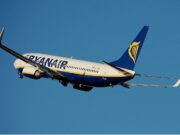General aviation (GA) pilots who choose to conduct intersection takeoffs rather than use the entire length of the runway are accepting a higher level of risk, the U.S. National Transportation Safety Board (NTSB) said Tuesday in releasing Safety Alert 071-17.
Intersection takeoffs, where only a portion of the runway is used for departure, are used in GA operations to save time, but pilots may not fully understand the risks associated with this practice, NTSB said in a news release accompany the Safety Alert. By reducing the amount of runway used during takeoff, pilots have less runway available to them in the event of a system or engine malfunction during takeoff, to abort the takeoff, or to perform an emergency landing.
NTSB said it investigated at least 10 accidents between 2000 and 2015 in which pilots were attempting intersection takeoffs. The agency highlighted three fatal accidents in the Safety Alert. In one of the accidents, NTSB said that if the pilot had use the full length of the runway “the additional 3,150 ft of runway likely would have been sufficient to enable a straight-ahead landing on the runway after the power loss rather than the turnback.” The airplane stalled at low altitude during the pilot’s attempted turnback.
Among other points, NTSB recommended that GA pilots allow for adequate time for preflight preparation and taxiing to eliminate time pressure to conduct an intersection takeoff; know their aircraft’s takeoff and landing performance limitations; and not feel obligated to accept an intersection takeoff if it is offered by air traffic control.

